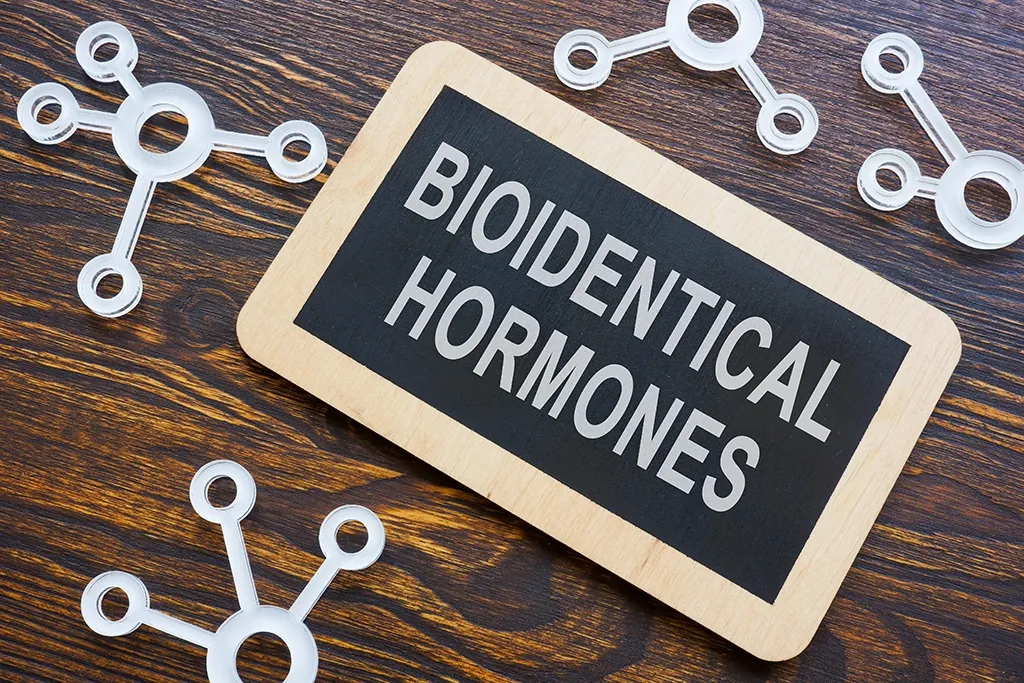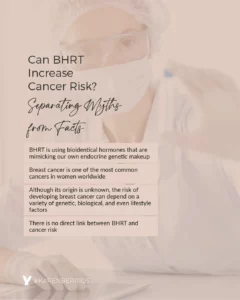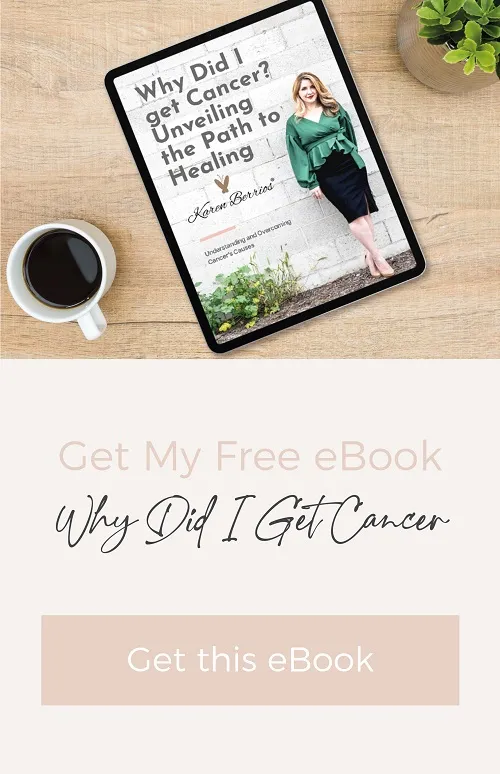

Can BHRT Increase Cancer Risk? Separating Myths from Facts
Bioidentical hormone replacement therapy or BHRT has been a topic of speculation since it was introduced. Traditional hormone therapy that’s been around for longer has shown a lot of benefits, but has also been linked to some adverse side-effects and the potential of being harmful when used for longer periods of time. Consequentially, when BHRT began its application, similar concerns were raised, particularly in the field of breast cancer in women. What is known today and do bioidentical hormones pose a risk for cancer? Here’s what we found out.
What is BHRT?
Bioidentical hormone replacement therapy is an alternative treatment to conventional hormone therapy, used to help those with hormonal imbalance. The majority of affected patients suffer from some form of pre-menopausal and menopausal symptoms which can drastically lower their quality of life and make day-to-day tasks significantly harder.
From brain fog, fatigue, and hot flashes to insomnia, weight gain, and vaginal dryness, a non-optimal endocrine system can cause a variety of side-effects which can last for years. That’s why most healthcare professionals reach for hormone replacement therapies as the best way to manage your unpleasant symptoms.
Unlike the conventional hormone replacement therapy that uses artifical and lab-created hormones, bioidentical hormones come from a plant source, making them safer and more natural to our own hormonal makeup. Researchers agree that they’re easier to be accepted by the body and cause less adverse effects, but many believe that more studies need to be done in order to fully understand the way they work in the human body.
Compounded Bioidentical Hormones
The greatest concern surrounding bioidentical hormones comes in the form of their compounded variation. Compounded bioidentical hormones are made by pharmaceutical companies and they’re typically made-to-order, based on a doctor’s prescription.
They are not FDA-approved or oversought, which makes it hard to understand its composition and whether or not it’s actually safe. This is why experts recommend sticking to BHRT that’s been FDA-approved and safe, with promises of more studies to come.
What We Know About Breast Cancer?
One of the most prevalent cancers worldwide, breast cancer occurs when breast cells start growing uncontrollably and form lumps. Not all lumps are of cancerous origin, which is why regular exams and check-ups help with early detection and prevention. Breast cancer occurs mostly in women, but it’s also possible in men.
Breast cancer can start in any part of the breast, and can easily spread through blood and the lymphatic system throughout the entire body. This is why when detected, the usual next step is to check all of the surrounding lymph nodes to ensure none of them are symptomatic.
Breast Cancer Types
There are many different types of breast cancer, as well as stages of the disease. Here are some of the most common:
- Invasive: breast cancer that has spread to the surrounding tissue
- Invasive ductal carcinoma (IDC) that starts in the milk ducts is the most common of all breast cancers (over 80%).
- Invasive lobular carcinoma (ILC) that starts in the lobules, glands that produce milk, is second most common type of breast cancer.
- Triple-negative breast cancer is not as common, but it’s pretty agressive. It’s characterized by being negative for estrogen and progesterone receptors and has no additional HER2 proteins. Luckily, some new developments have come to light in this area, with a promising vaccine and treatment therapy.
- Triple-positive breast cancer is a rare type of cancer that’s on the other hand, positive for both, estrogen and progesterone receptors and has has too many HER2 proteins.
- Inflammatory breast cancer is extremely rare (around 1% of cases) and aggressive, leading to very low chances of treatment and survival
- Non-Invasive: breast cancer is localized and hasn’t spread to the surrounding tissue
- Ductal carcinoma in situ (DCIS) hasn’t spread outside of the milk ducts.
- Lobular carcinoma in situ (LCIS) hasn’t spread outside of the lobules. However, this is not considered a pre-cancerous state and is thought to be benign.
Breast Cancer Stages
Different types of breast cancer have different treatment options and outlooks, but they also depend on the stage. There are different ways of diagnosing the correct stage, with both a pathological (or surgical) and clinical factors. They take a variety of important aspects into account, from the size of the tumor and whether or not it has an estrogen and a progesterone receptor to where did it spread and how much of the HER2 protein is being produced. Here is the basic grading stage that encompasses all of the factors:
- Stage 0 – Also known as carcinoma in situ when no cancer cells are detected outside of where they initially started.
- Stage 1 – Invasive breast cancer that spread around the area where it started from, but not to lymph nodes.
- Stage 2 – the tumor is 2-5cm but hasn’t spread to the lymph nodes, or it’s smaller and it has spread to the auxiliary lymph nodes.
- Stage 3 – larger than 5cm or has been found in four to nine lymph nodes
- Stage 4 – the cancer has spread beyond lymph nodes to other organs and tissue
Why Breast Cancer Occurs?
Unfortunately, there is no clear reason why breast cancer occurs and there’s also no way to fully prevent it. Some factors cannot be changed as they’re biological or genetic, but research has found some evidence in which lifestyle choices could potentially increase the risk of developing breast cancer as well reocurrence after a successful remission.
Lifestyles that may increase the development of breast cancer:
- Alcohol – studies show a link between frequent alcohol consumption and breast cancer.
- Obesity – especially after menopause, as the majority of weight gain comes from estrogen in the fat tissue.This increase in estrogen (which after menopause shouldn’t be happening) can increase the risk of breast cancer.
- Certain hormonal birth control – Studies have found that women using oral contraceptives might have a higher risk of developing breast cancer than women who have never used them.
- Menopausal traditional hormonal replacement therapy (HRT) – studies show a potential increase in developing breast cancer post-menopause, especially in recurrence of cancers that have already been in remission. This is why bioidentical hormones are often put in the same category, as there haven’t been enough studies to support otherwise.
Biological and genetic risk factors:
- Aging
- Inheriting certain genes like BRCA1 and BRCA2
- Family history of breast cancer
- Having dense breast tissue
- Having benign breast tissue conditions
There are other, less common risk factors like being exposed to radiation or an estrogen-based drug called diethylstilbestrol, as well as not having children and starting early menstruation, but these are rare and supported with not enough research.
Diagnosis and Treatment of Breast Cancer
Breast cancer diagnosis is usually done through regular screening and check-ups which include self-exams, mammograms, and ultrasounds. The American Cancer Society recommends these guidelines for women with an average risk of developing breast cancer:
- If you’re a woman between the ages of 40 and 44, you CAN start screening with a mammogram once per year.
- If you’re a woman between the ages of 45 and 54, you SHOULD get mammograms once per year.
- If you’re older than 55 you CAN switch to a mammogram every other year.
On the other hand, if you are at a higher risk of developing breast cancer, you can start earlier, even when you’re 30.
Not every cancer will be shown on a mammogram, which is why ultrasounds and even MRI are often recommended. Still, in most cases, the best prevention is to do regular self-exams and get checked whenever you feel a lump – even if it turns out to be benign. It’s always better to be safe.
Can BHRT Increase Cancer Risk?
According to the American Cancer Society, taking hormonal therapy might not be safe for post-menopausal women who have previously suffered from breast cancer. Hormonal therapy increases the levels of estrogen in your body, which may increase the changes of cancer reocurrence and growth. This is why BHRT is often put in the same bucket, even without any official studies that link bioidentical hormones and cancer.
Conclusion
Hormonal therapy has been an incredible source of relief for thousands of women worldwide, and since bioidentical hormones entered the market, it’s become even safer and absorbable by the human body. Negative side effects, although existing, are rare, and with no link between biodientical hormones and cancer, it’s hard to say that BHRT increases cancer risk. If anything, it helps you deal with postmenopausal symptoms that can sometimes make your daily activities incredibly hard to perform.

hey there
I'm Karen!
I have found my cancer journey to be a positive and profound transformational experience. I’m inspired to share my healing journey here, and trust you’ll find hope, encouragement and purpose as you discover the healing power that lies within you.
Join
The Mailing List!
By signing up for my newsletter, you agree with our Privacy Policy and Terms & Conditions.



